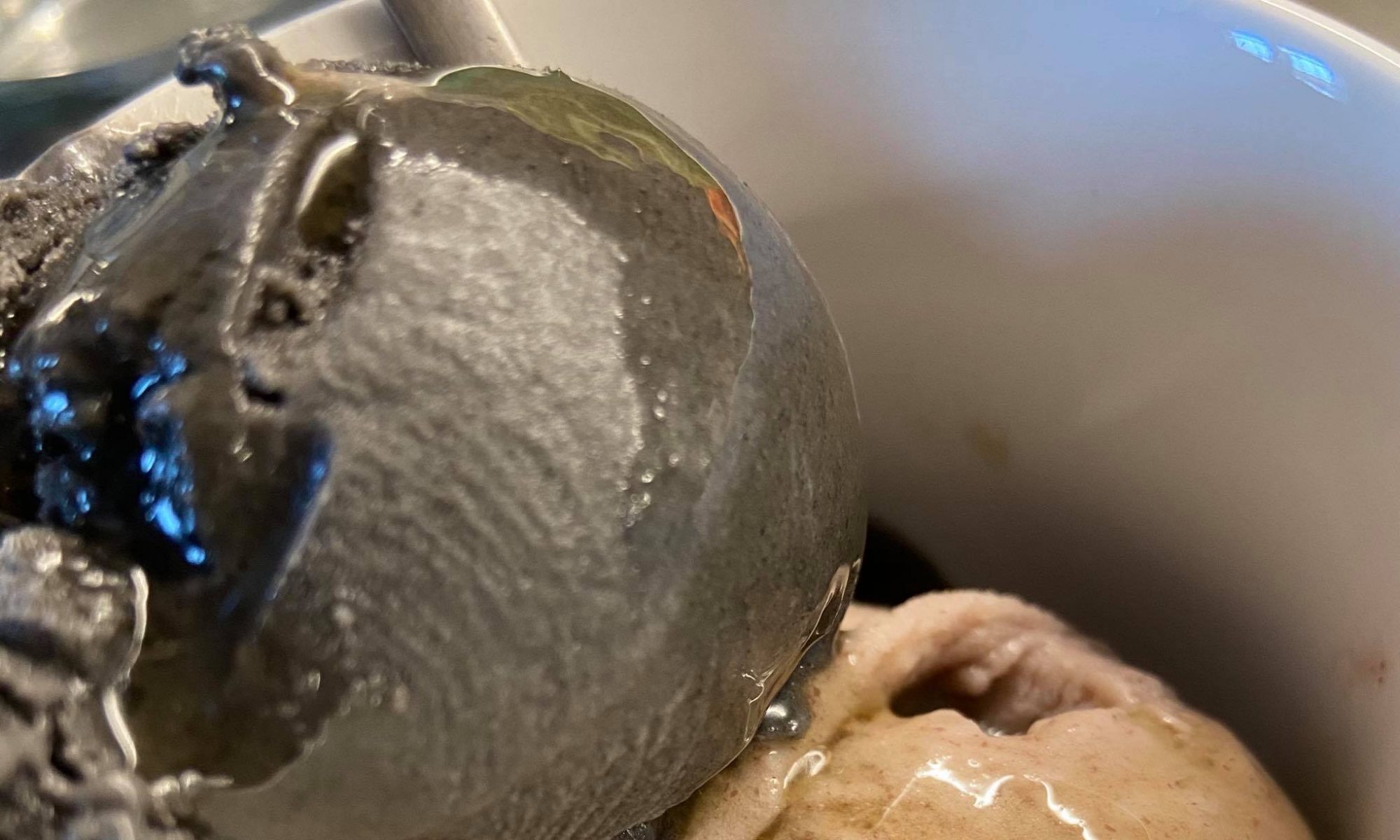For this water-based ice cream I used dark chocolate (90% cocoa), cocoa powder (22-23% fats) and a bit of miso to increase intensity and complexity. My husband declared it ‘best chocolate ever’ 🙂
| water | 477g |
| dark chocolate (90% cocoa mass) | 100g |
| sucrose | 80g |
| dextrose | 40g |
| cocoa powder (23% fat) | 20g |
| miso | 30g |
| fsc+xanthan 9:1 | 3g |
Mix together sucrose, dextrose and the thickeners. In a small pan containing the measured water, bring the chocolate, cocoa powder and miso to ca. 50°C and then add the solids, mixing well with an immersion blender. Bring to a about 80°C to homogenise all the thickeners and switch the heating off. Cool the mixture down rapidly by placing it in a ice-water bath, still blending, then let it rest for a few hours, blending from time to time to ensure it stays smooth. Churn, then transfer to the freezer for a couple of hours.
Note – my ice creams are designed to be consumed immediately or kept in a somewhat warmer freezer (-10°C). If you wish to store them at the normal -18°C freezer temperature, they will become harder than usual (most ice creams will go hard in a deep freezer, it’s normal, nothing wrong with it!). To limit this inconvenience, you can bring the percentage of sugars (sucrose and dextrose) up to a total of approximately 22% keeping the same sucrose/dextrose ratio and decrease the liquid or the fibers to keep the same mixture total weight.
For example, in this recipe you would use 98g sucrose, 49g dextrose and measure 451g water, leaving the rest unchanged.


